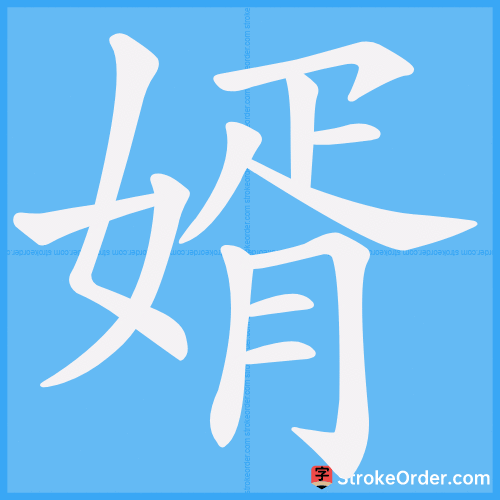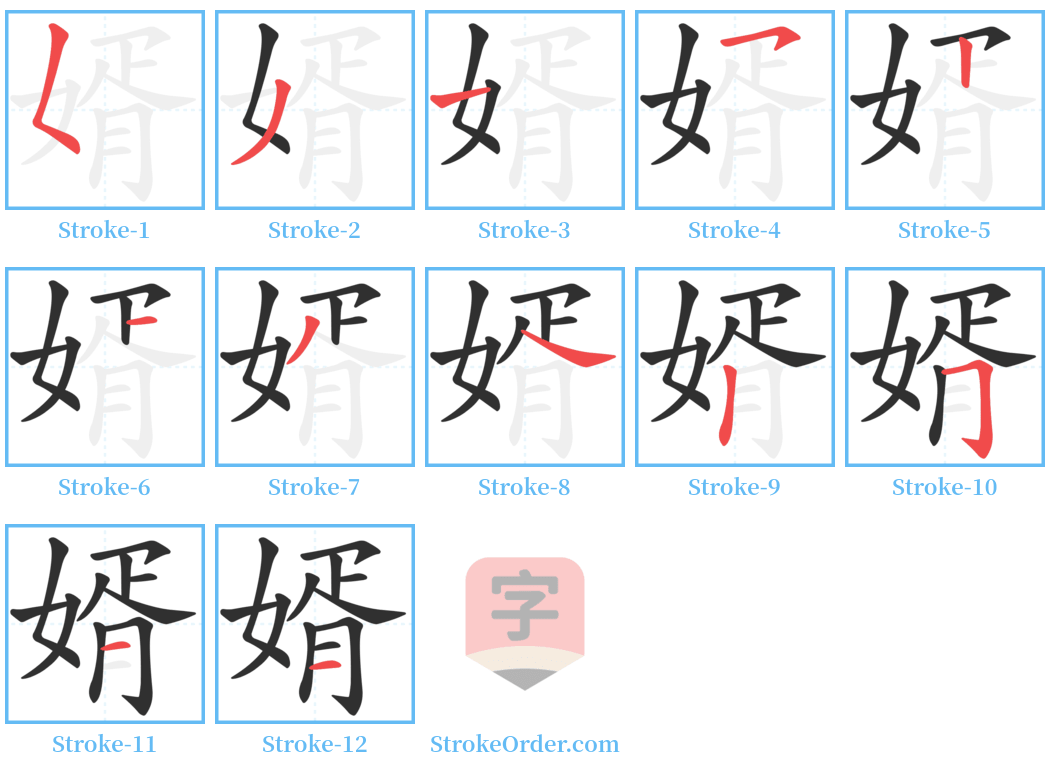婿 Stroke Order
Animated Stroke Order of 婿

Stroke Order Diagrams for 婿

Step-by-Step Handwriting Guide for 婿

Learn to Write Chinese Characters with Video Tutorials
Watch the video of writing the Chinese character "婿", learn the correct stroke order (笔顺) of the character "婿", and master the standard way of writing the character "婿".
Free Printable Handwriting Practice with Stroke Order: 婿
Printable Writing Practice Worksheet of "婿" in Portrait Orientation (Tian Zi Ge)

Printable Writing Practice Worksheet of "婿" in Landscape Orientation (Tian Zi Ge)

Information of 婿
Pinyin
xù
Radical
女
Strokes
12 strokes
Usage
★★★★★
Definition
son-in-law
婿 (xù)
1. Husband: 夫~.
2. The husband of a daughter, younger sister, or other junior relatives: 女~. 妹~. 侄~. 甥~. 贤~. 翁~.
Definition:
- The original meaning: In ancient times, women referred to their husbands as 婿.
Character Composition:
- Phonetic compound: Composed of the radical 女 (woman) and the phonetic 胥 (xū). Sometimes written as "壻".
Meaning:
1. Same as the original meaning (En. husband).
2. A term of endearment for adult males (En. an adult male human being).
3. The husband of a daughter, younger sister, or other junior relatives (En. son-in-law).
Usage Examples:
- 夫婿 (hūn/fū xù): Husband.
- 婿固不遣 (The son-in-law is certainly not sent away).
- 老舍’s "骆驼祥子": "There was no son... Xiangzi is indeed good, but when it comes to the son-in-law, there's still a long way to go!"
Verb Form:
- To become a son-in-law: 作女婿; 作夫婿 (En. become son-in-law).
Usage Examples:
- In Tang Dynasty, Lu Guimeng’s work mentions: "Moreover, Shun’s son-in-law to the emperor, was there nobody to fear, and was subsequently killed?"
Through this perspective, the character 婿 embodies familial relationships and societal roles, especially as they relate to marriage and lineage.
Input Method for 婿
Pinyin
xu4
Wubi
vnhe
Cangjie
vnob
Zhengma
zmiq
Four Corner
47427
Unicode
U+5a7f
Same Pronunciation Characters